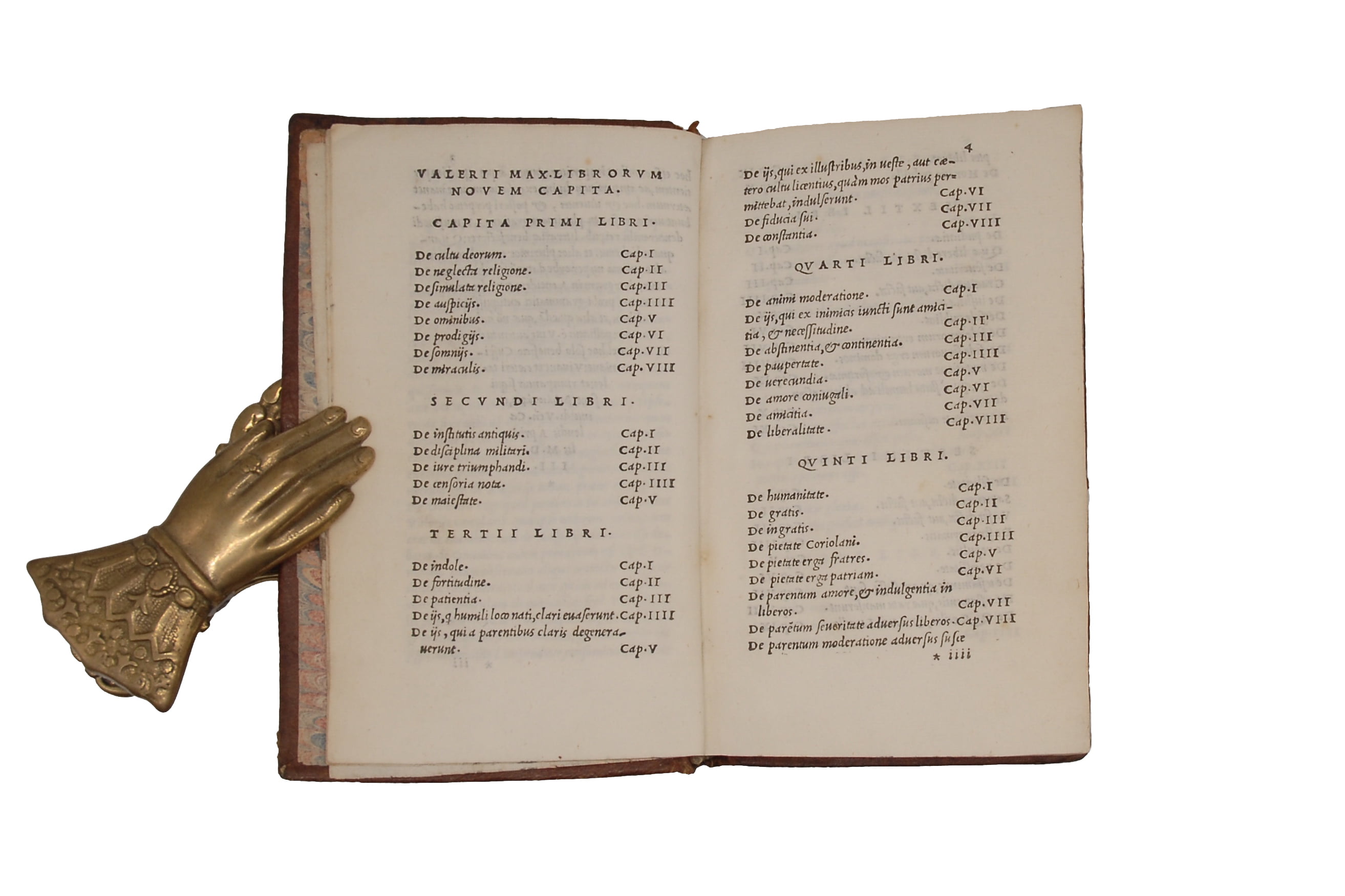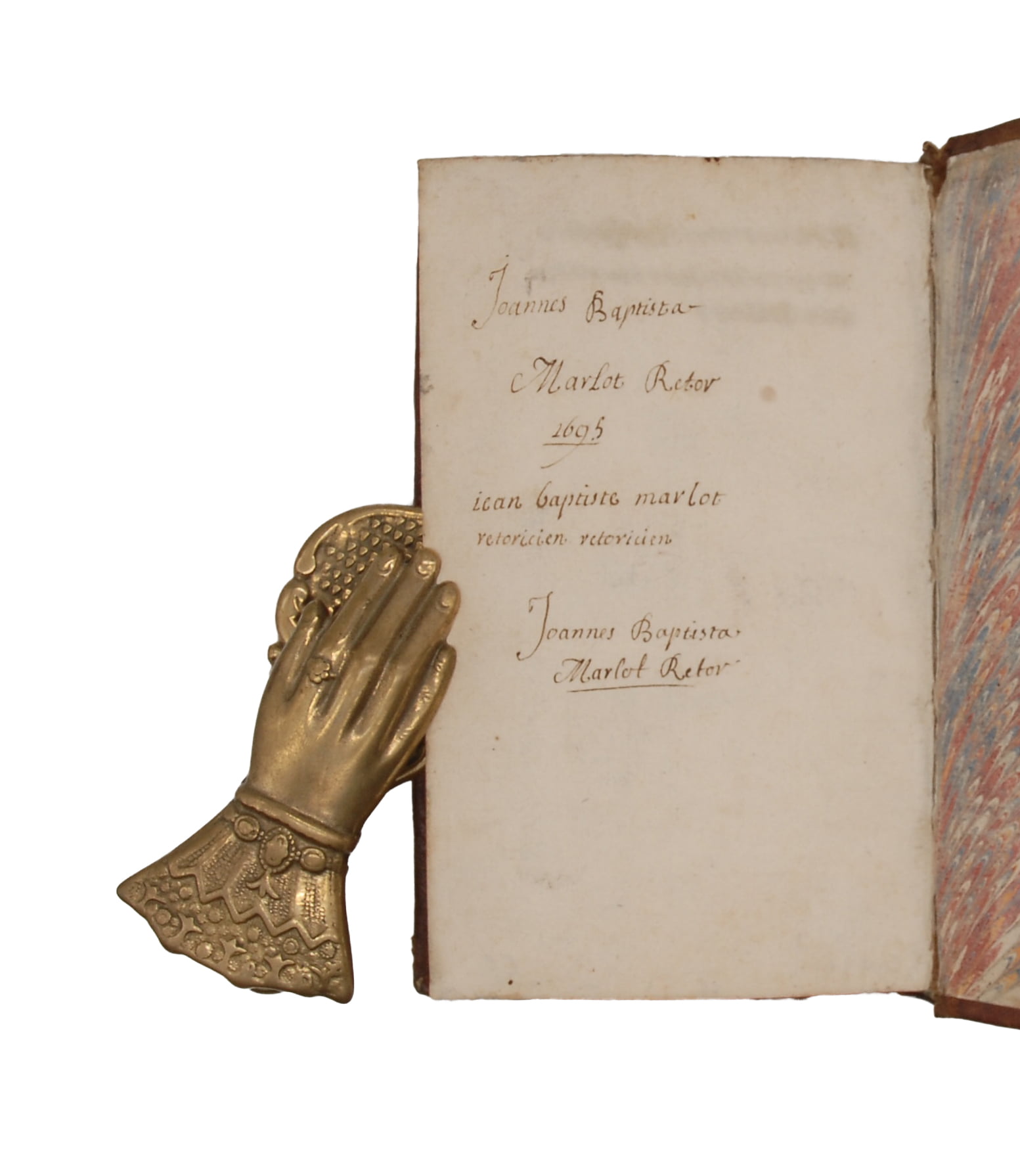VALERIUS MAXIMUS
SPLENDID ARMORIAL BINDING
Exempla quatuor et viginti.
Venice, in aedibus Aldi et Andreae soceri, 1514£3,250.00
8vo. ff. 216. Italic letter, little Roman. Aldine device to t-p and last verso else blank, decorated initials and ornaments. T-p a little soiled at margins, occasional slight age yellowing. A very good, remarkably clean copy in late C17 French calf, marbled pastedowns, triple gilt ruled, gilt oval arms of François Brunet de Montferrand to covers, his gilt crowned monogram to corners, raised bands, large gilt fleurons and gilt cornerpieces to compartments, all edges marbled. C18/C19 ms. bibliographic notes to fly, c.1600 ms. ‘Spes mea [rubbed] Deus’ at t-p foot, ‘Joannes Baptista Marlot Rector 1695’, ‘iean baptiste marlot retoricien’ and ‘Joannes Baptista Marlot Retor.’ to rear eps.
Very handsome, remarkably clean copy of the second Aldine edition, in an elegant late C17 French binding. It was in the library of the great bibliophile François Brunet de Montferand (1646-96), President of the Chambre des Comptes in Paris. He undertook a tour of England during the reign of Charles II, of which his holograph ms. report (1676) is extant (now at the British Museum). By 1695, the copy belonged to Jean-Baptiste Marlot ‘rhetoricien’, a classics teacher; he was probably the same recorded as a student at the Collège des Augustins in Lille c.1660 (‘Ann.’, 20).
This important work, the editio princeps of which dates 1501, was first printed by Aldus in 1502 as ‘Dictorum et factorum memorabilium libri novem’. This edition includes the two dedicatory letters to J. Ludbranc and R. Cuspiniani present in the second issue of the 1502. The Roman rhetorician Valerius Maximus (fl. 1st century AD) was one of the most successful classical authors in the middle ages. His collection, in nine books, of remarkable sayings and deeds of ancient figures is extant in hundreds of mss, and was used for didactic purposes in schools of rhetoric. Each book comprises subsections organised by subject, the first two devoted to religion (e.g., prodigies, dreams, miracles) and Roman culture (e.g., institution, military discipline). The remainder mostly consider vices and virtues—e.g., patience, friendship, justice, fidelity, ‘luxuria’—but also last will and testaments and old age. A most attractive copy.
JCB I:61; Renouard 69:9; Brunet V, 1049; Ahmanson-Murphy 128. Not in Dibdin or Moss (1501 and 1512 eds). Cornhille Magazine (1906); Annales de l’Est et du Nord (1907).In stock











